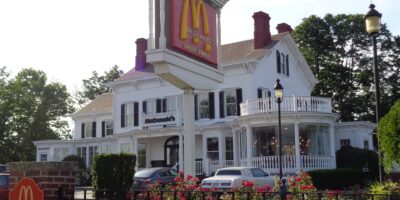Where Are the Reopening Experiments?

Why isn’t anyone conducting experiments to better discern when certain socioeconomic activities can safely commence?
Like others at AIER, I think COVID-19 is a seriously contagious disease and seriously dangerous for the aged and infirm. Most state governments have been too rigorous in their response to it. Proponents of “opening” the economy like me don’t know for sure, but neither do the proponents of keeping us “locked down.” The burden of proof should fall on the latter because lockdowns infringe so many fundamental human rights. But since most Americans apparently only perceive government overreach when troops are in the streets (paramilitarized police harassing beachgoers is okay apparently) we remain at an impasse.
Most of us were willing to go along with the “flatten the curve and raise the line” narrative because it suggested a lockdown of weeks rather than months. Well curves have been flattened by something but the goalposts seem to have shifted towards the “necessity” of having a vaccine or effective treatment in hand before restoring basic Constitutional and natural freedoms.
That approach privileges that which is seen, lives lost to COVID-19, over that which is not (or not yet) seen, lives lost or destroyed by the lockdowns, the lives, not coincidentally, of modern slaves, African-Americans, American Indians, and others providing services to those comfortably locked down.
Nevertheless, signs that key parts of the economy and our society are breaking down abound. The risk of serious calamity grows every day, perhaps even “exponentially.” I could concoct a scary model, with big red blotches of people projected to die of malnutrition or drinking feces-filled water, but I respect your intelligence too much to do that.
The debate over reopening remains polarized, and polarizing, because we have very little data to go on. We do know that states and countries that haven’t locked down are not disintegrating into COVID-19 death traps because, as AIER’s Phil Magness explains, people can pretty much keep themselves safe if they understand the risks they face. But places like Sweden and the Dakotas seem too different and distant to be relied upon to make life and death judgements for No. Va., So. Cal., or Lone Highland.
So why haven’t we been running experiments in places where medical infrastructure is so under-taxed at present that HCPs are being furloughed? They abound, apparently, but for some strange reason maps comparing the number of hospitalized COVID-19 patients to capacity do not. Anyway, they know who they are.
This is what I have in mind:
- Advertise for volunteers to attend a baseball game, movie in a theater, dinner in a restaurant, haircut in a salon, etc.
- Equilibrate supply (number of seats) and demand (number of customers) via the price mechanism. If D > S, raise the positive price until D = S. If S > D, offer cash or prizes until D = S.
- Put in place some medically and economically sensible screening mechanism. I would suggest a temperature check and visual examination by an HCP (perhaps a laid off med surge nurse) and an affidavit or bond where the customer swears that s/he has not had any of the major COVID-19 symptoms in the last two weeks.
- The HCPs should wear PPE but otherwise it should be banned from the event.
- The customers agree to 2 weeks of self-isolation and medical monitoring after the event, which is not a big deal if they know about the restriction beforehand and expect to be locked down for that period anyway.
- The investigators should publish the exact protocols followed and post results daily and then summary results at the end of the experiment.
Start with one of these in a venue matched to available COVID-19 healthcare capacity (“the line”). If the results are propitious, start running more, first staggered by a week, then a day, and then simultaneously. This will give us some baseline idea of how many asymptomatic spreaders are out there and how likely they are to infect others. Now. In specific places, under specific protocols. No elaborate models needed.
Literally, what are we looking at if hair salons open in Pasadena or the Atlanta Braves host the Phillies of Philadelphia? Maybe COVID hell breaks loose. Or maybe nobody will get sick. Most likely something in between will happen but we will have some numbers and some smart cookie might spot something, like affidavits are worthless but $10,000 bonds are enough to induce people who had symptoms to tell the truth.
Yeah, we know such experiments are not perfect because the people are volunteers and hence not random and there are no specific control groups. On the other hand, if we are dealing with asymptomatic spreaders who have no idea they are sick, we are kinda getting at randomness.
Even if such experiments do not meet high falutin’ scientific standards, they will serve to a) give politicians cover for reopening or staying shut down and b) build public confidence that protocols are being developed and tested in real world situations. Right now, many people seem to be waiting for miracle cures and vaccines instead of figuring out what we can do with the situation as is.
In addition to showing there is light at the end of the tunnel and providing a few people with services they need, such experiments would generate some employment and should be treated as “one-offs” that will not affect anyone’s unemployment benefits.
Again, I think that most places could re-open now, and indeed should never have shut down in the first place, but if politicians insist on taking the cautious approach, they should at least have to provide some empirical evidence that re-opening would lead to a spike in deaths. The only way to do that is to experiment.











